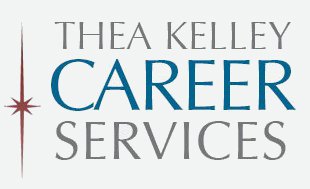 How should you update your LinkedIn profile when you’re unemployed?
How should you update your LinkedIn profile when you’re unemployed?
It’s hard to know how to fill in your “title” when you don’t have one (or think you don’t). But there are ways to handle it that will get you a lot more attention from recruiters than “Seeking….”
First, have you already updated your profile to show that you’ve left your most recent job? If you haven’t, I encourage you to put it off a while. Your resume needs to show an ending date for that job, but your profile doesn’t, and it’s common practice to leave it alone for a few months.
If you’ve already put an ending date on your job, here’s how to handle the “current job” issue honestly yet effectively.
First, let’s think about how recruiters use LinkedIn.
Recruiters go to your LinkedIn profile for more information if your resume interested them.
Do you want the first thing they see to be the fact that you’re unemployed? Many recruiters see that as a possible negative. They may wonder: Were you fired? Did you quit because of a problem? Were you viewed as dispensable when staff cuts needed to be made?
Don’t emphasize the negative. There’s a better way.
Recruiters search for people with relevant keywords in their current job title.
“Seeking” is not a relevant keyword when a recruiter is looking for a Data Scientist. The most relevant keywords are “Data,” “Scientist,” “Analyst,” and having those words in your current title field tells LinkedIn’s software to include your profile in the search results.
You may have those keywords listed in your past jobs, but your current “title” has special power to put your profile near the top of the list.
So, what should you put in the “title” field if you’re unemployed?
Tell them what business you’re in (or want to be in). Because the good news is: An unemployed Widget Developer is still a Widget Developer. Ditto for Product Manager, Marketing Specialist, Finance Executive, Human Resources Manager, Administrative Assistant, and so on. You’re still the type of professional you are, even if you’re between roles at the moment.
What about “company”?
Listing your industry is a good choice here. Another option is to two or more companies you’ve worked at in the past, if they’re well known and respected. Or combine these two approaches, as I’ve done in the Project Manager example below.
Here’s an example:
Let’s say you’re a project manager. In the “title” field, you could write: Project Manager–PMP Certification, SDLC, Waterfall, Agile, and in the “company” field: Top Tech Firms including Google & Workday.
Doesn’t that look a whole lot better than “Seeking Employment” at “None”?
What’s with all those extra words in that title, Thea?
Remember the importance of keywords and the extra power of the “title” field? You can load up your past job titles this way, too. Just be sure it’s transparently clear what your official title was.
What do I put under “Description”?
Keeping in mind you want keywords but also an engaging and readable profile, you could include:
- A description of your expertise and the type of role you’re looking for
- A few of your best accomplishments, maybe heading them “Career Highlights” or “Key Wins” or such
- Quotes from your LinkedIn recommendations or other kudos you’ve received
- A list of your top skills
- Media: photos, charts or documents
What if I’m seeking a career change into a job I haven’t done before?
Much of the above still applies. You might need to adjust the title a bit. Let’s say you were in sales, with some experience in marketing. Now you want to go into marketing full time. Your title might be something like: Sales and Marketing Professional. Or if you were a public school teacher but you want to go into Learning & Development (training), and you’ve earned a certification, you could use the certification as a job title: Associate Professional in Talent Development (APTD).
Knowing how to update your LinkedIn profile when you’re unemployed will help you get a great job sooner. And don’t forget the basics. Read my post, 10 Tips for an Impressive LinkedIn profile.

